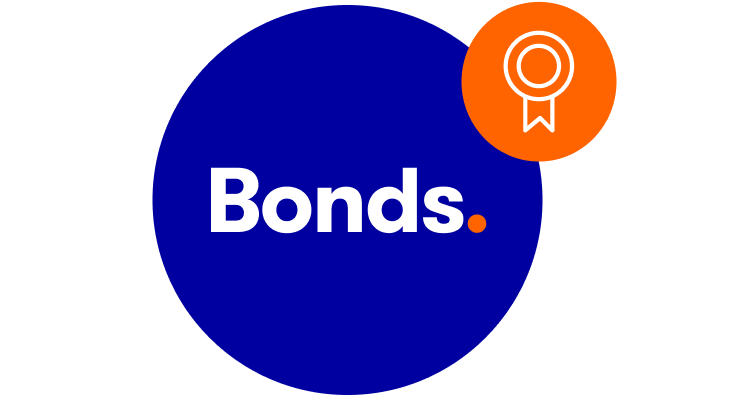Bonds hub
Index-linked bonds
Index-linked bonds are more complicated than regular bonds. Here’s what you need to know before investing.

What are index-linked bonds and gilts?
Index-linked bonds, also known as inflation-linked bonds, pay a level of interest that is linked to the current rate of inflation in the market where the bonds are issued.
They are generally issued by governments, but some companies also issue index-linked bonds. In Britain, the first index-linked bond (or gilt) was issued in 1981 for large institutional investors such as pension funds.
Other countries like Australia, Canada and Mexico then followed suit, and in 1997 the US government launched its first index-linked bonds. US bonds are known as Treasury Inflation-Protected Securities, or TIPS.
Index-linked bonds allow governments to broaden their investment base and lower the cost of their interest rates, as long as inflation does not increase dramatically.
How do index-linked bonds work?
Index-linked bonds pay interest which is linked to different inflation rates in the markets that they are issued in. The principal payment, which investors receive after a bond matures, is also adjusted for inflation.
These are measured in different ways internationally:
- The retail price index (RPI) is the preferred inflation measure in the UK
- In Europe it is the European Harmonised Index of Consumer Prices (HICP)
- In America it is the consumer price index (CPI).
The coupon and principal take into account the inflation accrued since the index-linked gilt was issued. The precise details of the method of indexation for each bond are set out in the prospectus for the bond.
Index-linked bonds pay interest payments twice a year. The Debt Management Office for the United Kingdom has its own method of calculating index-linked gilt payment.
What is RPI inflation?
There are two main calculations for inflation in Britain:
- the retail price index (RPI)
- consumer price index.
RPI inflation is the older measure of inflation that was first used in 1947, but the Office for National Statistics (ONS) prefers to use the CPI for its monthly inflation figures.
Every month, the ONS looks at 180,000 prices of 700 items. The items change over time to reflect spending habits.
RPI includes mortgage interest payments which are heavily impacted by interest rates, while CPI takes no account of housing costs. As a result, RPI typically comes in higher than CPI.
Are index-linked gilts the same as TIPS (Treasury Inflation-Protected Securities)
They are both index-linked bonds issued by British and American governments but there are some differences. Gilts pay investors in pounds and TIPS pay investors in dollars, which means that exchange rate fluctuations affect how much money an investor receives.
The inflation adjusted TIPS use American CPI data, while British index-linked gilts use RPI.
Both bonds pay interest twice a year.
What are the benefits of index-linked bonds?
Investors use inflation-linked bonds to secure income protection with the inflation rate.
Inflation can be devastating for investment portfolios. Assuming an annual return of 6% and an inflation rate of 3%, the real growth of a portfolio is just 3%.
At time of writing in September 2022, inflation was near 10%. It means the same portfolio would be losing almost 7% of real purchasing power a year.
While companies can pass on inflation to consumers, providing investors with some degree of protection against rising prices, government bonds are restricted to their fixed coupon payments.
What are the risks of index-linked bonds?
While index-linked bonds give investors income protection with the inflation rate, providing a stable and predictable return, the price of the bonds can swing dramatically before they mature.
Index-linked bonds are actively traded on secondary markets, meaning that investors can choose to pay more for a bond than its issue price or less, depending on market conditions. Interest rates are the most important factor when pricing bonds.
When inflation begins to increase, central banks tend to raise interest rates to try and cool inflation. This is what happened in 2022.
This is bad news for the price of bonds as investors are no longer getting the best rate, and inflation erodes the value of returns. Investors sell bonds, causing prices to fall and yields to rise.
In 2021, inflation was picking up but there was little indication that rates would rise as central banks thought inflation would be transitory. This made index-linked bonds one of the best types of bonds to hold.
At time of writing in September 2022, interest rates are rising fast, and this is impacting the price of all bonds, although index-linked bonds have been hit particularly hard. A basket of index-linked gilts has fallen around 25% this year.
Because of high demand from big financial institutions, UK inflation-linked bonds typically take a long time to mature, often more than 20 years. They therefore have high “duration” - the sensitivity of a bond, or bond fund, to any change in interest rates. The higher the duration, the more sensitive the bond is to a movement in rates.
The bond price vs interest rate calculation
BlackRock, the world’s biggest fund manager, advises that for every 1% increase or decrease in interest rates, a bond's price will change approximately 1% in the opposite direction for every year of duration.
How to invest in index-linked bonds with ii
interactive investor offers index-linked US and UK government bonds.
Index-linked bonds are also bundled up in funds, such as open-ended funds or exchange-traded funds (ETFs), which are easier for DIY investors to trade.
Buying a basket of bonds is generally a better option for DIY investors as they can diversify their exposure to interest-linked bonds, rather than relying on just a few individual bonds.
Active fund managers also invest specifically in index-linked bonds, while some incorporate them into their portfolios to protect against inflation.
Is now a good time to invest in index-linked bonds?
At time of writing in September 2022, the outlook for index-linked bonds depends on both the inflation rate and what happens to interest rates.
If there is high inflation but falling interest rates, that would be positive for the prices of index-linked bonds. But rising interest rates and falling inflation would be negative for prices.
Investors who buy index-linked bonds and hold them to maturity do not have to worry about rising and falling bonds prices and can simply enjoy inflation-adjusted returns.
How are index linked bonds taxed?
Index-linked gilts are exempt from capital gains tax if an investor buys and sells a gilt and makes a profit. However, income from index-linked gilts forms part of someone’s income and are taxed at income tax rates.
TIPS do not have the same capital gains tax exemptions as index-linked gilts.
When held inside an ISA, there is no capital gains or income tax to pay on index-linked bonds. Self-invested personal pension (SIPP) tax rules, such as income tax or the 25% tax free-lump sum, apply to index-linked bonds as they do to other investments.
Frequently asked questions about index-linked bonds
How to buy bonds
You can trade a number of bonds and gilts via your online ii account. For any that aren't available online, you can deal over the phone by calling us on 0345 607 6001.

The value of your investments may go down as well as up. You may not get back all the money that you invest. If you are unsure about the suitability of an investment product or service, you should seek advice from an authorised financial advisor.